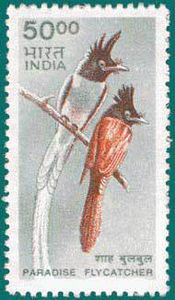The number of nests of Indian paradise flycatcher (Terpsiphone paradisi) has registered a decline in Kajligarh forest area where they had been reported in abundant earlier. In a particular stretch of five kilometres in Kajliigarh forest near a flowing water body, more than 10-12 nests of state bird had been reported from several years. However, this year only 4-5 nests were spotted. "These birds are known for making their nests on the same trees, many a times even on the same branches, the decrease in the number of nests shows a change in behaviour," said Ajay Gadikar, ornithologist. While the observation was based on a particular stretch of Kajligarh forest, experts were trying to find out if the population has shifted to some other place in the same forest or nearby. While the reason behind the decrease in nests were still not very clear, Gadikar was of the opinion that damage to trees due to human intervention in the area has rose in last one year.
This particular species of bird breeds in the forested areas near Indore in the month of June-July with the arrival of monsoon. Each year these birds make nests on the Arjun trees found adjacent to the various river streams. Damp weather makes the forest abundant with insects, which is the primary diet of these insectivores' birds. They come here to breed as they have plenty of food available. The pairs have laid eggs in nests which are expected to hatch in next 10 days. By end of July, pairs would be seen feeding their babies. They would fly away by end of monsoon after their babies grow up. Many birds of flycatcher family breed during this time. Black capped monarch flycatcher and yellow oriole nests can also be seen in the forests nearby.
Source:
The Times of India, 18 July 2016
http://timesofindia.indiatimes.com/city/indore/State-bird-count-decreas…

- Login om te reageren
